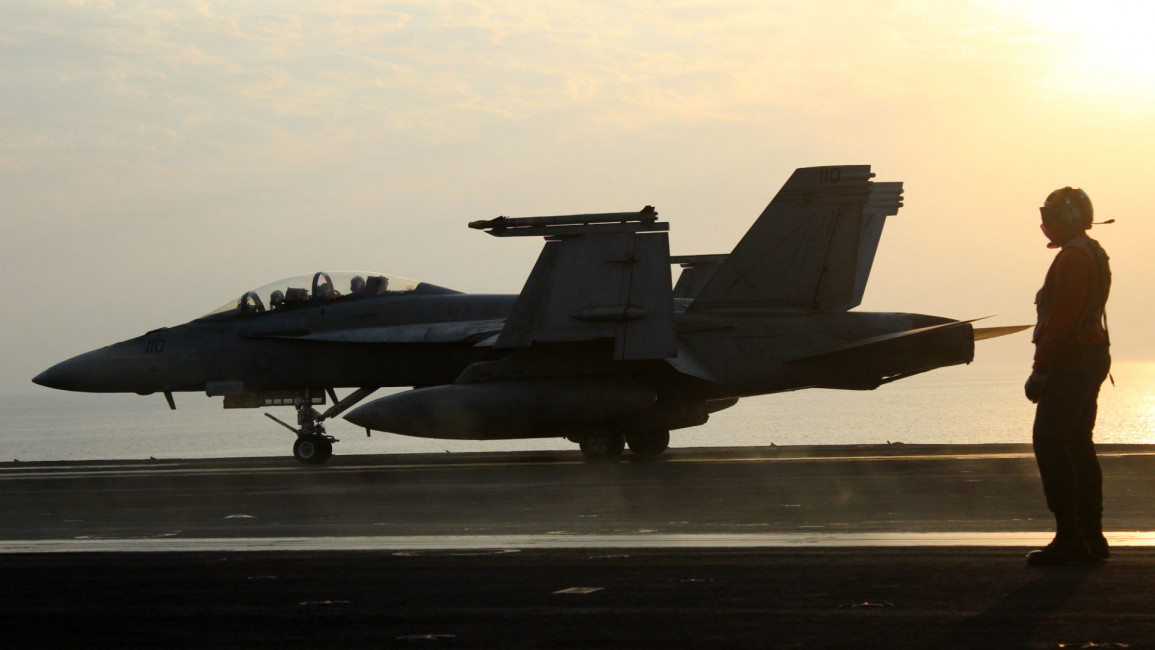
Fly-way to the danger-zone: Photoblog aboard the USS Eisenhower
Fly-way to the danger-zone: Photoblog aboard the USS Eisenhower
4 min read
The USS Dwight D Eisenhower has been spearheading the US-led coalition's fight against the Islamic State group in Iraq and Syria.
One of the world's largest and most powerful military machines, along with its accompanying fleet of destroyers, cruisers and strike aircraft, the Eisenhower projects US power over a radius of 1,000 miles, making sure that shipping in the Gulf continues to move freely, and the oil upon which the world economy depends keeps flowing.
The New Arab was granted rare and exclusive access to the gargantuan ship as it conducted operations.
Read more: Life aboard the aircraft carrier bombing Syria and Iraq
All photos by James Brownsell.
Follow James Brownsell on Twitter: @JamesBrownsell
One of the world's largest and most powerful military machines, along with its accompanying fleet of destroyers, cruisers and strike aircraft, the Eisenhower projects US power over a radius of 1,000 miles, making sure that shipping in the Gulf continues to move freely, and the oil upon which the world economy depends keeps flowing.
The New Arab was granted rare and exclusive access to the gargantuan ship as it conducted operations.
Read more: Life aboard the aircraft carrier bombing Syria and Iraq
All photos by James Brownsell.
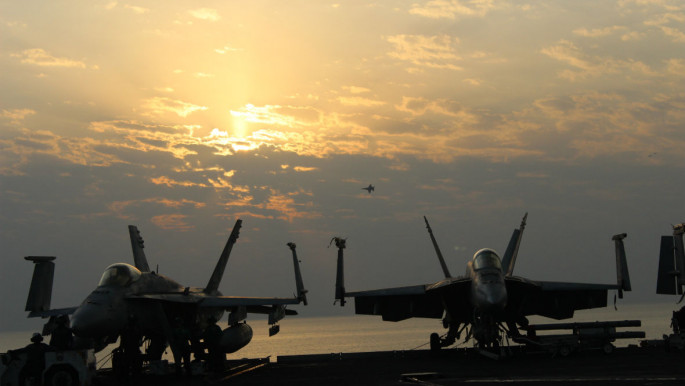 |
| An F-18 strike fighter jet, silhouetted against the setting sun, loops around the ship before its landing approach |
 |
| The steam catapult shoots fighters and cargo planes off the ship, accelerating from 0-180mph in less than two seconds along a 500ft runway |
 |
| The F-18 fleet is taking part in bombing runs against targets believed held by the Islamic State group in Iraq and Syria, around an hour's flight from the carrier |
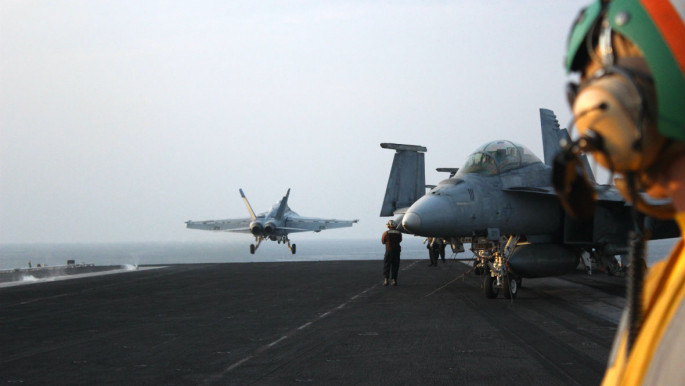 |
| The $30 million jet has a top speed of nearly 1,200mph |
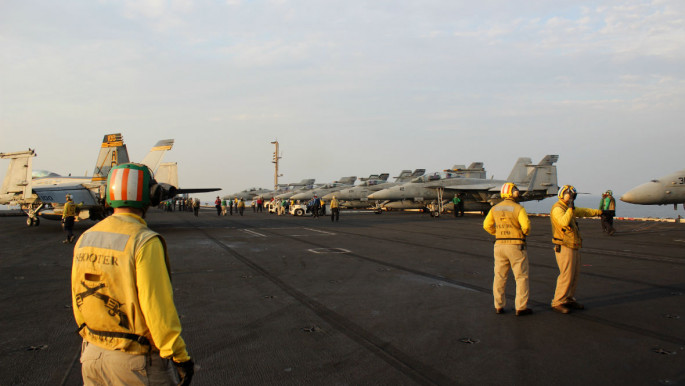 |
| There are more than 60 strike aircraft, including F-18s and anti-submarine helicopters onboard, as well as reconnaissance aircraft and cargo planes |
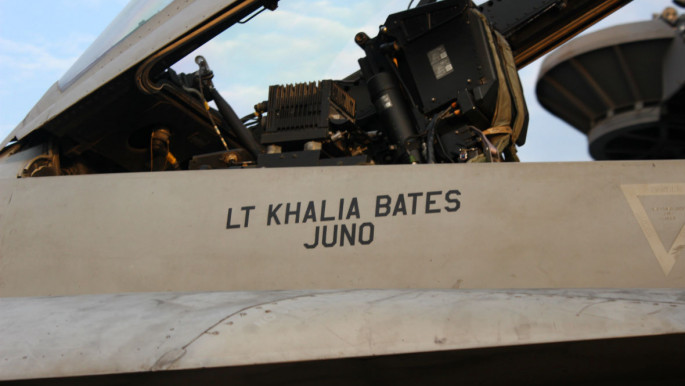 |
| Around 25 percent of the ship's company are women, including many of the pilots |
 |
| Crew in green shirts are responsible for hooking planes to catapults and maintaining aircraft; 'shooters' sit in a protected bubble within the deck and press the button to shoot the aircraft off the ship |
 |
| The carrier's sick-bay is capable of performing surgical operations while at sea, though many critical trauma injuries are transferred directly to local hospitals |
 |
| The USS Eisenhower has a Starbucks aboard, catering to the more than 5,300 crew, and raising questions over the role of private companies in US military operations |
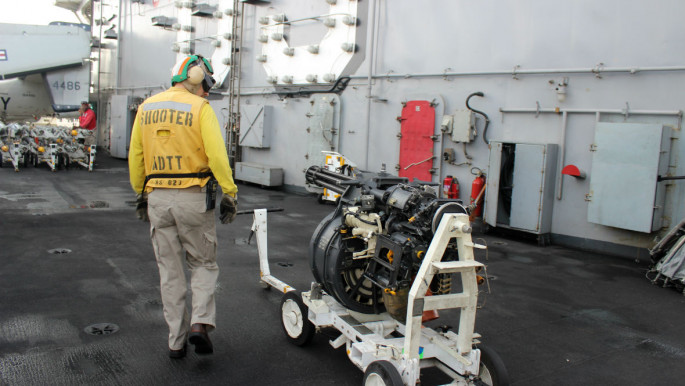 |
| Most 'shooters' are former fastjet pilots. They all say they have the best job on the ship - but then, most of the crew say that |
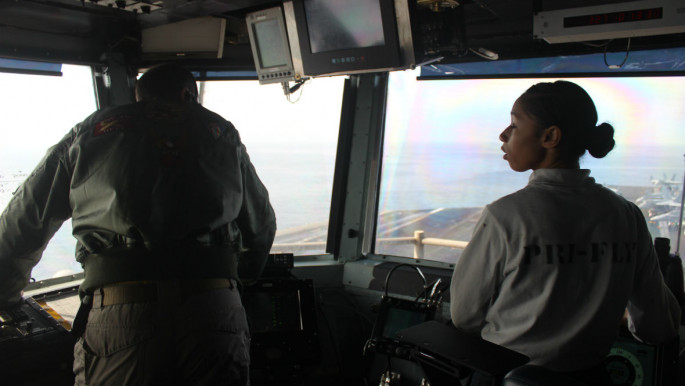 |
| Flight deck operations are overseen by air traffic controllers, the 'airboss', and their deputy - named 'mini-boss' |
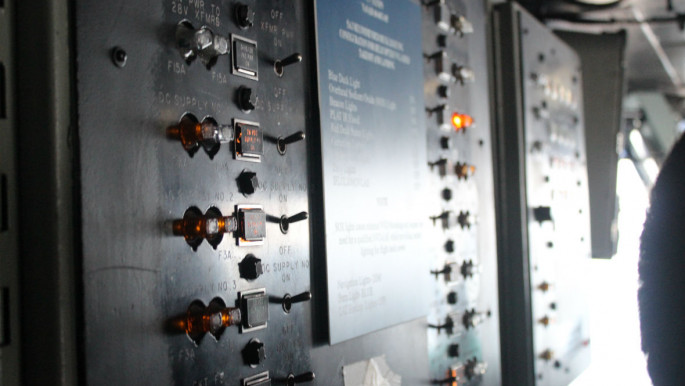 |
| The USS Dwight D Eisenhower was built between 1970-1975 and participated in the 1980 Iran hostage crisis, the Gulf war of the 1990s, and more recently supporting operations in Afghanistan |
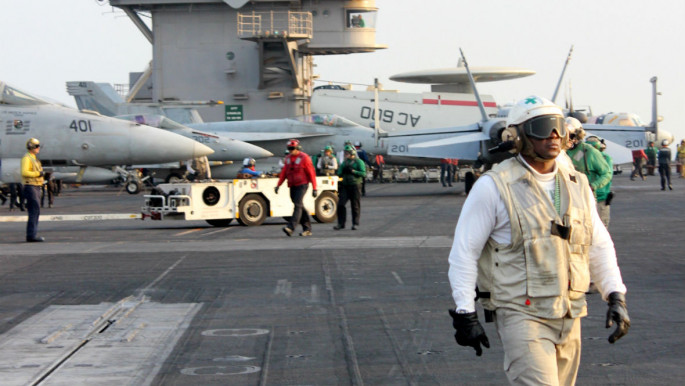 |
| The Eisenhower's flight deck measures around 4.5 acres - larger than four football pitches |
 |
| The flight deck crew can launch two aircraft and land one every 37 seconds in daylight operations, and one per minute at night |
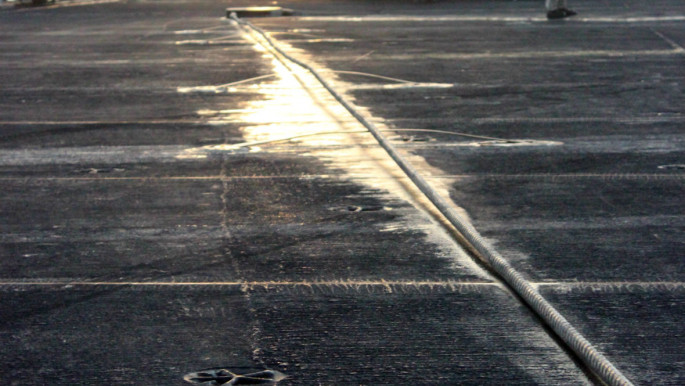 |
| One of three 'arresting cables' which catch landing planes |
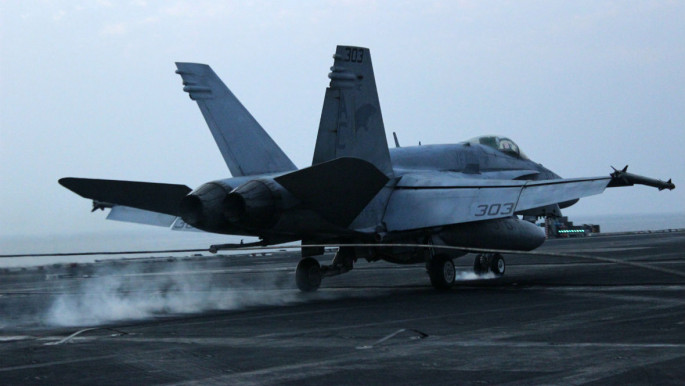 |
| Each plane landing on the ship has a tailhook, which catches an arresting cable at the precise moment of landing |
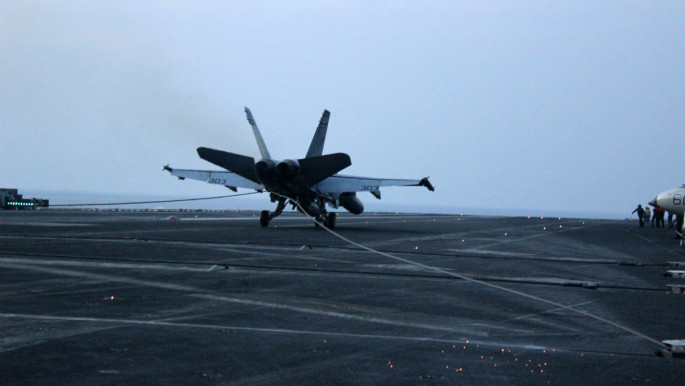 |
| Sparks fly as the 37,000lb (16,700kg) plane is slowed from 180mph to 0 in around two seconds, in a space of around 300ft |
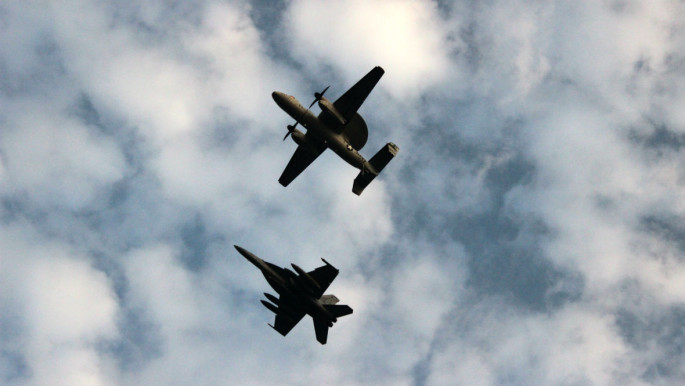 |
| An F-18 accompanies a Hawkeye tactical aircraft, which provides airborne command-and-control capabilities of strike operations while also managing air, land and sea surveillance |
 |
| Night operations are notoriously more difficult for pilots on aircraft carriers, but they are key to US military strategy |
 |
| When walking around this vast, cavernous hangar, it is easy to forget that it is enclosed within a ship |
 |
| Essential maintenance and repairs are carried out here, with spare parts being transferred from supply ships when necessary |
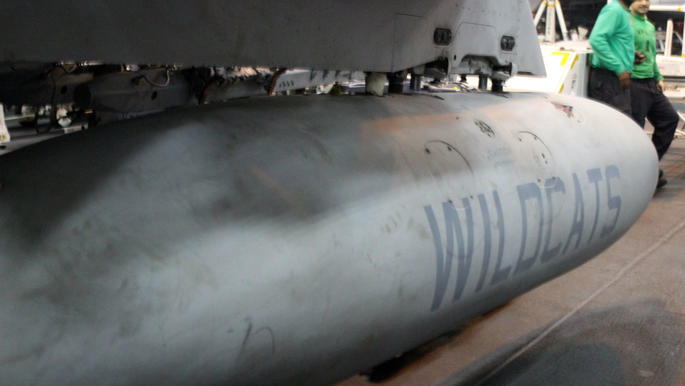 |
| Air crews often decorate fuel tanks with the squadron's name - the 'Wildcats' are Strike Fighter Squadron 131. Eisenhower also hosts the Gunslingers, Swamp Foxes, Zappers and Screwtops, among others |
 |
| Crew members receive frequent briefings from more senior officers |
 |
| Some repair jobs are a little more basic than others |
 |
| All aircraft aboard US carriers are designed to fold up in order to save space on board. Fuel tanks are stored in racks in the ceiling above the aircraft |
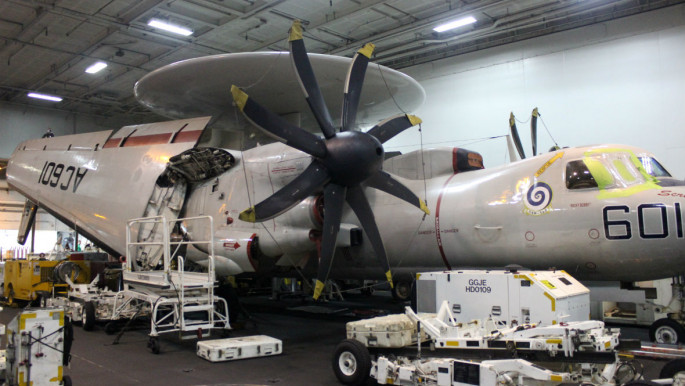 |
| The huge wings of the Hawkeye are swept back when not in use |
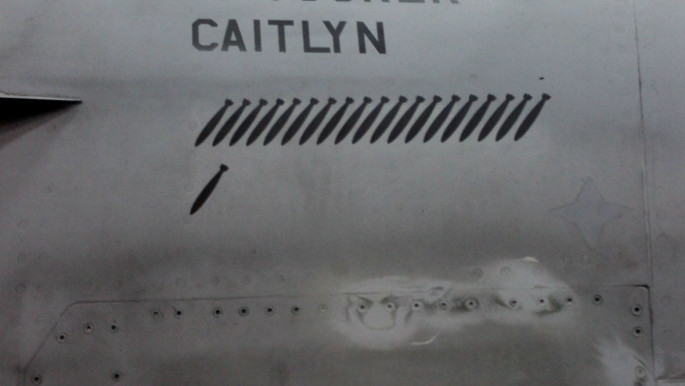 |
| Pilots also help decorate their own aircraft |
 |
| During night-time operations, most of the ship - including this gym which is open to the sea - is bathed in a red light due to international maritime rules |
 |
| Death from above: A rack of JDAM missiles ready to be loaded onto f-18 jets - each missile costs around $25,000 |
 |
| The sidewinder sleeps tonight: Each of the Raytheon-made air-to-air AIM-9 Sidewinder missiles costs upwards of $600,000. They are among the world's most-used missiles |
 |
| Space aboard the aircraft carrier is always at a premium, despite the ship's vast size |
 |
| A Seahawk helicopter's missile launcher |
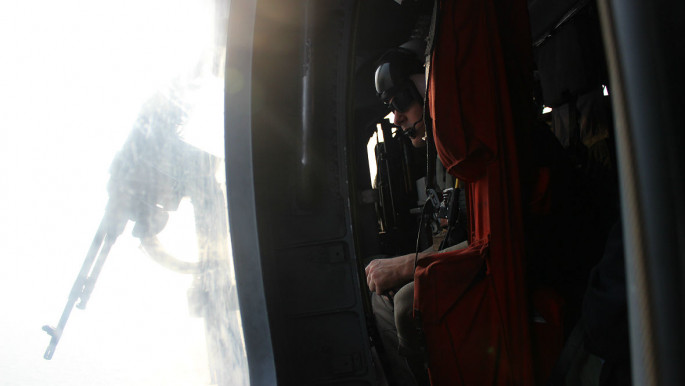 |
| A Seahawk crewman conducts anti-submarine reconnaissance while flying at around 150mph, 500ft from the water's surface |
Follow James Brownsell on Twitter: @JamesBrownsell
